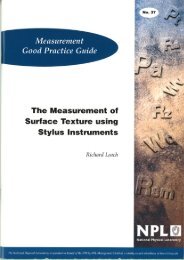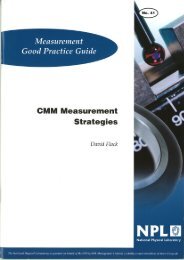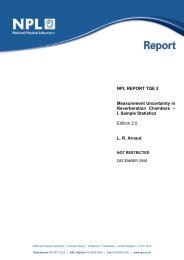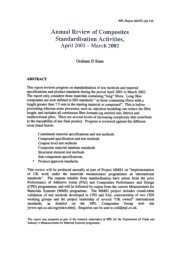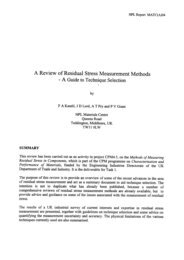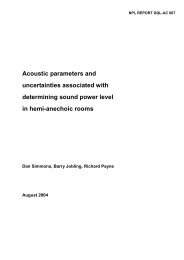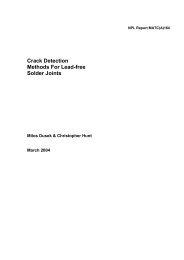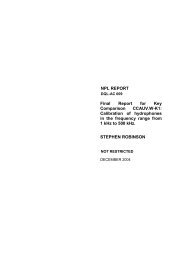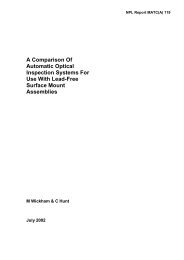Dimensional Measurement using Vision Systems - NPL Publications ...
Dimensional Measurement using Vision Systems - NPL Publications ...
Dimensional Measurement using Vision Systems - NPL Publications ...
You also want an ePaper? Increase the reach of your titles
YUMPU automatically turns print PDFs into web optimized ePapers that Google loves.
<strong>Measurement</strong> Good Practice Guide No. 39<br />
Figure 30: Array of spots used to determine image distortions and magnification errors.<br />
7.6 SOURCES OF MEASUREMENT UNCERTAINTY<br />
If a vision system is being used as a comparator, then detailing the sources of uncertainty<br />
is straightforward. If the system is used for measurement, relying on the pixel calibration,<br />
then a little more work is required. The following two examples, which involve the<br />
measurement of dark features against a bright background, illustrate these two<br />
measurement approaches. It should be noted that vision systems are not restricted to just<br />
performing simple measurements on images of this kind alone, but can of course deal with<br />
images with far more complex features. The simple nature of the examples that follow is<br />
purely to give clarity to the analysis of the sources of uncertainty.<br />
Firstly, let us consider a vision system used as a comparator to measure the diameters of a<br />
series of spots, ranging in size from 3-48 µm. The calibration standard is an identical series<br />
of spots, the diameters of which have been calibrated and are traceable to the national<br />
standard of length. The spots were measured <strong>using</strong> a Leitz Ergolux AMC microscope with<br />
a 100x objective, a 1024x1024 square pixel Pulnix digital camera and a Leica QM550 CW<br />
image analyser. As this is a comparative measurement, the detection threshold is set at<br />
50% of the camera grey scale.<br />
Before each unknown spot is measured, the vision system must be used to measure the<br />
calibration standard. This calibration gives the measurement its traceability. The same<br />
software routine is used for both the known (calibration standard) and unknown (test)<br />
spots with each spot measured three times in the same position in the image. This means<br />
that any errors, perhaps due to the effects of distortions or magnification, will be seen in<br />
53



